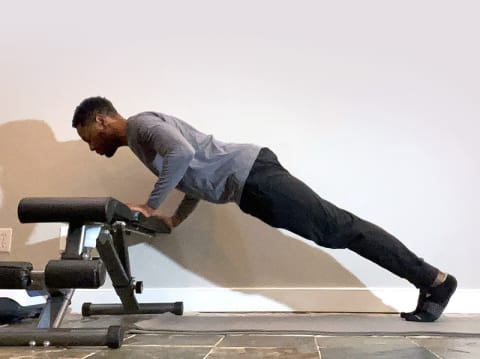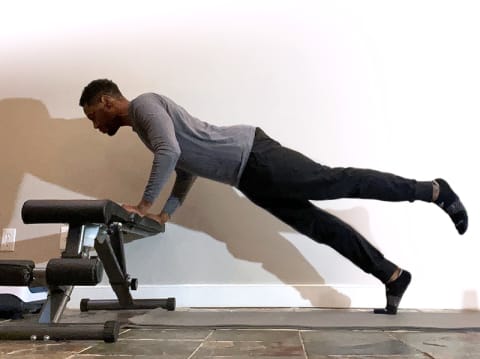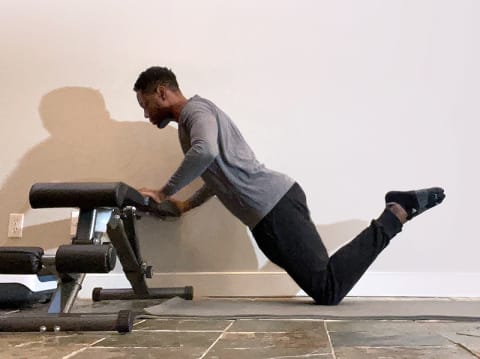Here’s how to do incline pushups properly, the benefits, plus how to modify the move to suit your athletic needs, according to two personal trainers. “The wider your arms, the more they target your chest,” adds certified personal trainer Krista Stryker, NSCA-CPT. “If your arms are more narrow, they’ll target your triceps and shoulders more.” You’ll definitely feel it more in your chest compared to a normal pushup. In addition to working the upper body, with proper form, you’ll also be working your core, back, and leg muscles, too. “I particularly love incline pushups as a way to build up to doing a full pushup on the floor,” Stryker says, “and prefer them to knee pushups at helping to build up strength and proper pushup form.” If you have a shoulder injury, it’s probably best to avoid pushups—check with your doctor before giving them a try. Similarly, elbow and wrist injuries may not fare well here, either. However, incline pushups do put less pressure on those joints than regular pushups. Williams says you can also perform incline pushups with a single leg lifted, to work one leg at a time. And to challenge your balance and core strength a bit more, try placing your hands on an exercise ball rather than something solid.





